Eventually, looking through the data from dance students in the Baltimore region, we get to what is probably the most uncomfortable set of questions – money. Several questions in the BRDS were about money spent on dance training in some form. First, an exploration of how much money gets spent on class. For this, a free-form numerical response was requested in each of the four survey-established class levels (Beginner, Intermediate, Advanced, Masterclass). As a refresher, here’s what we learned about these categories already. Of BRDS respondents, this many took classes at each level during 2016:

And their combined commitment to classes during 2016 at each level:
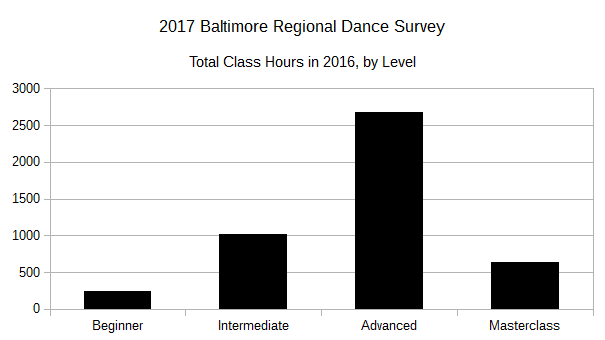
When asked, “Approximately how much did you pay for classes in total in 2016?”, 49 respondents answered this question. 36 Respondents spent some money (13 indicated no spending on classes during 2016), and about half of those spent money at the Masterclass level.
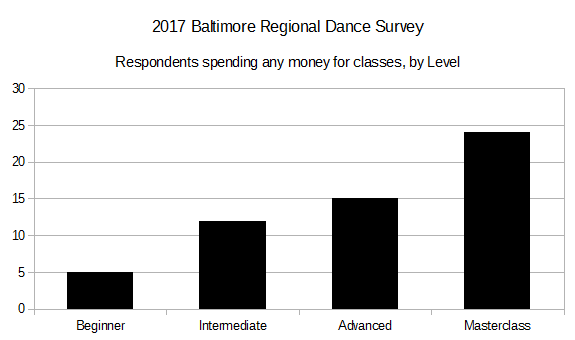
This closely mirrors the number of respondents taking classes, but there is a strong indication that a significant level of training is happening without the “paying for” part. Interestingly, the gap between “taking” and “paying” seems to expand with class level:

From previous data, we know that there are very limited hours at the Masterclass level, and we also know that the BRDS sample is biased toward more experienced dancers. So, let’s look at some dollars. Among the 50 respondents answering this question, 36 indicated they paid some money on classes, and the total for the group is $110,813, or $2261 per respondent (counting the respondents that spent no money). Keep in mind, BRDS survey respondents are biased toward the more experienced dancers, but $2261 is almost $190 per month.
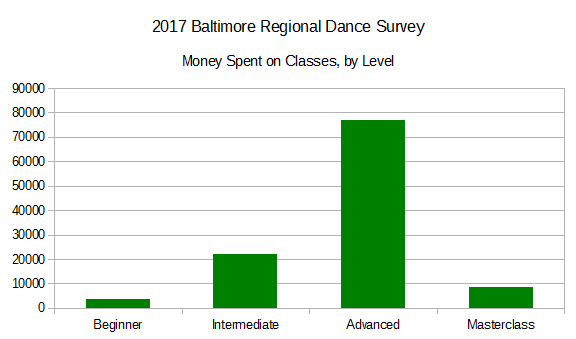
Not all dancers took classes at all levels, so breaking out the average spending per active respondent at each level, gives this:
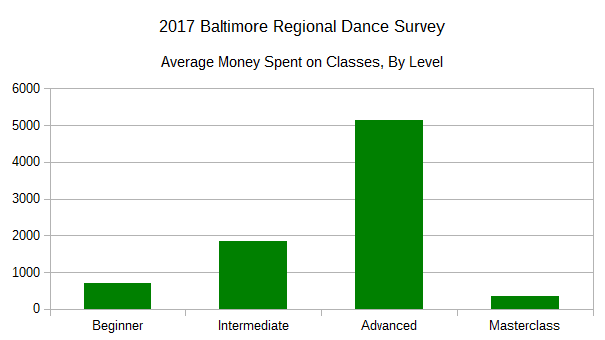
I do realize that it’s a bit of a challenge to review a whole years’ worth of spending, break it down into four newly-defined categories, and come up with some meaningful number. There is probably a wide variation in accuracy from respondent to respondent (depending largely on how seriously the individual engaged the survey).
The next question is even more challenging in some ways – This was an effort to illuminate sources of training money other than the trainee themselves. In two parts, “Who paid for your classes during 2016? Please indicate what percentage was paid for by others if you did not pay 100% of your expenses yourself” was given a slider from 0% to 100% to indicate external sources of funds. Respondents were then asked to “Please describe the sources of training funds (e.g., scholarship, sponsorship, parent).”
Of those that spent money (36 respondents), 20 indicated they were entirely self-funded for training and 4 indicated they were entirely externally-funded. Breaking this down into ranges (plus 0% and 100%), it looks like this:
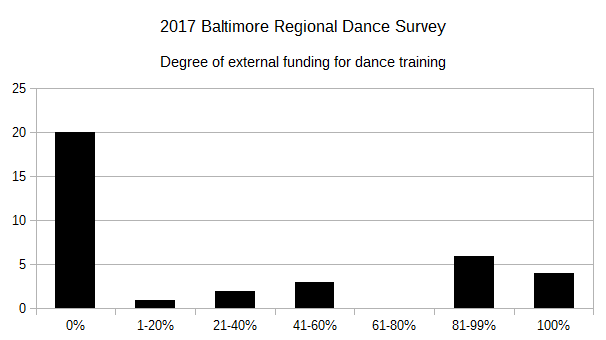
And the sources of those external funds? Parents (5 Respondents), Employer (5 Respondents), Company Classes (3 Respondents), Barter (3 Respondents), Grants (2 Respondents), Scholarships (1 Respondent).
One thought on “Economics of Baltimore Dance Classes”